THE COOKBOOK TEST #0004: ‘AU PIED DE COCHON SUGAR SHACK’ BY MARTIN PICARD
INSTALLMENT #0004 (FREE) / WHEN MEALS GO WRONG (THE RIGHT WAY) / AU PIED DE COCHON SUGAR SHACK: SEXISM AND MAPLE SYRUP / MUST A COOKBOOK BE USABLE? / PDC BREAKFAST SANDWICH
Dear Readers,
My favorite kind of restaurant meal barely merits explaining: it’s a meal where the hospitality is warm and uncomplicated, the food is delicious and reflective of the place and the seasons, the company is good, and the evening floats by on a cloud of goodwill, delicious flavors, and possibly one or two substantial draughts of tasty alcohol.
It’s my second favorite kind of restaurant meal that takes more work to explain: It’s the memorable disaster, the meal where enough goes unambiguously wrong that you’re left confused, bemused, amused, and generally discombobulated. I feel like you can learn just as much (if not more) from a meal gone sideways as you can from a perfect feast. It also makes a more sympathetic anecdote after the fact, as there aren’t many stories duller than: “Oh, yes, we went to an expensive restaurant and the food was very delicious and they were nice to us.”
Before I spin this tale about dining at Montreal’s famous Au Pied de Cochon, I should qualify a few things. There were elements of the meal we really liked. The vibe of PDC was chic and lively. The housemade hard cider was a solid value, inexpensive, reflective of the terroir, and quite tasty. Our pate de foie gras appetizer was really top notch, among the best we’ve tried anywhere.
But then: We got maple sugar French fries that could have been regular French fries at any given hotel restaurant or airport food court. We got a salad that was terrific with the included bits of ripe pear, but the bits were tiny and numbered about three.
And we got a $50 lobster roll topped with foie gras - at the recommendation of our server - that was a pretty decent lobster roll complicated and ultimately ruined by the heavy and redundantly rich foie.
And then: sitting at the bar perched next to the open kitchen, we had a chance to watch the chefs work. I noticed one chef lick her fingers, and then touch some food to plate it. OK, not great. And then she did it again. And then she touched a remarkably not clean rag on her shoulder and plated some more food. And then she licked all of her fingers on her right hand. “Oh my goodness,” I thought, “the only way this could get more lick-y is if she licked the serving spoon.” And then she licked the serving spoon.
I nearly cackled with horrified delight, but realized I would need to explain myself. I looked over at Becca (my wife), to point out the ongoing lickfest, but I realized immediately that she was equally riveted. If you were sitting near the kitchen, you were stage-side to a c’est la vie approach to kitchen organization that was almost inspiring in its sheer brazen self-confidence.
My appetite declined in roughly equal parts with the floor show, and by the end of the meal, our waiter was inquiring nervously as to whether things were to our liking. I answered cheerfully and noncommittally, which was enough to get him to bring us the check, so we could leave and debrief. A night to remember!
You might be surprised that when I later found the AU PIED DE COCHON SUGAR SHACK COOKBOOK on sale at a bookstore for $15 Canadian I eagerly snapped it up, but a) it’s a large format, really beautiful cookbook, b) the sugar shack concept is a fascinating piece of Quebecois culture, and c) I am very comfortable acknowledging that PDC has probably served many hundreds of thousands of great meals, and we just arrived on a night (or during an era) when things were a little loosey goosey, no foie pun intended.
Now that I’ve read through the PDC Sugar Shack Cookbook, I can confidently say that it is Very Good and also Very Bad. More details on both of those points in just a moment.
at your service,
James Norton
AU PIED DE COCHON SUGAR SHACK
BY MARTIN PICARD
Restaurant Au Pied de Cochon / 383 pages / 2012 / $40CA (out of print; starts around $80US used)
The PDC Sugar Shack Cookbook is meant to reflect the more rustic side of the urban Montreal restaurant Au Pied de Cochon, sharing the menu and philosophy of its eponymous rural, sugar shack-themed spinoff restaurant. But the recipes are anything but rustic once you dive into them. Before we can start parsing ingredients and instructions, however, we have a plaudit and a content warning to get out of the way.
The plaudit is this: As a document that lovingly documents maple syrup - from its extraction to purification to its use as everything from a baking ingredient to poaching medium to pastry adjunct to straight-up food flavoring - this is a remarkable book. It dives incredibly deeply into the maple syruping process both in a general sense, and in a Quebec provincial sense, and in a PDC Sugar Shack restaurant sense.
The book is a lovingly illustrated and skillfully written ode to maple syrup in all of its many guises, and if you’ve never quite appreciated this ingredient before, this book will help you see the light. You get the sense, reading this book, that the authors wanted to elevate maple syrup to heights of any ingredient within the pantheon of fine dining and the world of refined culinary endeavors, and they make an excellent case throughout.
That case is somewhat undermined (if you do not enjoy traditional leering male chauvinism) or supported (if you do enjoy traditional leering male chauvinism) by the book’s artistic sensibility. Men, when they appear in its pages, are generally well into middle age, stocky, fully clothed, and doing things like writing menus, tapping maple trees for syrup, or cooking food. Women, when they appear in its pages, are generally in their early 20s, soaking their T-shirts in maple syrup, bending over while wearing a bikini, or appearing tastefully nude with various maple candy-related facts inked onto their backs.
Now: as a chonky middle-aged man myself, I can tell you that my own initial preference for cookbook models fall pretty much along these lines. Bring on the Relatable Dudes doing Important Dude Things and the sexy Maple Syrup-Soaked Sugar Babes! A++! No edits! Love that the book’s final illustration is of a pig making out with two hot chicks and one of them is totally topless!!
But as a tragically woke modern human being with an empathy for how human beings other than myself experience the world, I can see how this visual approach is kind of relentlessly degrading, despite being - and maybe all the more because of the fact that - “it’s all in good fun.” Most of the men in this book are there to work and share knowledge. Most of the women in this book are there to look hot and be displayed alongside and in fact covered by the food, putting them in a similar “tasty bon-bon” category.
Here in Minneapolis I got a chance a couple years ago to be a Big Downer Woke Scold when I loudly objected to Side Chick, a restaurant with a “women as a collection of sexy body parts”-themed menu, and I’ll do it again here: this sort of thing paints women into a subservient sex object corner in life, and it basically sucks.
I do love the cartoons, though! They’re legitimately entertaining! (Even if most of the themes are along the lines of: Pigs Are Delicious, Horny Pigs, and/or Here’s a Tree Getting Sucked Off By a Pig.)
SHOULD A COOKBOOK BE USABLE?
Once upon a time, I felt incredibly strongly that a restaurant cookbook should be usable, as opposed to a collection of fun-to-look-at, utterly unattainable, ridiculously hard-to-execute recipes that nobody will ever make. I have since revised that opinion, and ask only that cookbooks lean obviously into “you can make all of these things and they’ll work” or “you will fail to make these things and they will lead you down a skull-paved path to cosmic insanity” and stick to their convictions.
As you delve into the recipes of PDC Sugar Shack Cookbook, an experienced home chef should quickly abandon all hope. “Oh,” you might say, “this recipe calls for an entire pig head.” Or “oh,” you might say, “this recipe requires patisserie-level baking including gelatin, pastry cream, and temperature-sensitive candy making.” Or “oh,” you might say, “this recipe requires meringue spirals, homemade maple ice cream, homemade raspberry sorbet, homemade marshmallows, and marbled meringue shards.” Etcetera and so forth. I don’t doubt that the guys at Au Pied de Cochon have pulled all of these off, and brilliantly, but the book’s recipes are so hostile to an average home chef that it’s almost refreshing.
And because the recipes are so uncompromisingly difficult and challenging, and they delve so deeply into all the uses and permutations of maple syrup, they’re legitimately educational. Any one of the main dishes in this book would be fodder for a dinner party (or life-changing dessert) all by itself.
At any rate, I chose one of the easier recipes and dove into it.
PDC BREAKFAST SANDWICH: ONE OF THE EASIER RECIPES
Here are the things that I did and did not do in executing the PDC Breakfast Sandwich, one of this book’s easier recipes.
[X] Made breakfast sausage from scratch, including an overnight rest.
[X] Made English muffins from scratch (and in a skillet for some reason.)
[X] Poached eggs in maple syrup.
[X] Visited no fewer than three specialty stores in search of granulated maple sugar, finding it nowhere.
[] Made granulated maple sugar from scratch. (I only needed 1 Tbsp for a recipe with nearly 4 cups of total volume and my thermometer is on the fritz.)
[X] Drove across town to get specialized round cookie cutters for skillet-cooked English muffins.
[X] Shopped for and obtained a reasonable substitute for Quebecois Oka cheese (smoked Gouda.)
The resulting breakfast sandwiches were, in their defense, pretty delicious. The herbal, beautifully seasoned breakfast sausage patties are something I’d make again on their own, and the overall sandwich was a lovely balance of sweet (maple from the eggs), fatty/rich (from the sausage, melted cheese, and the egg yolks), savory (herbs in the sausage) and carby (from the English muffins).
The overall fuss and lack of scalability means that this would be a hard one to repeat, unless I could figure out a way to make English muffins in the oven using something more convenient than a bunch of free-form cookie cutters.
And the recipe worked as written with a few qualifications:
The recipe called for 1 cup of cornmeal to line the skillet bottom - roughly 1 Tbsp would have sufficed. This has the feeling of a restaurant-scale direction that was never scaled down.
Flipping the English muffins in a crowded skillet was comically difficult, with varying degrees of slippage and scraping involved. The four finished muffins were Excellent, Passable, Damaged and Basically Rubbish, respectively. I might do a better job if I tried it again, but I might not - getting heat, surface contact, and cornmeal to be perfectly consistent is a real challenge.
The English muffin dough was supposedly so wet that oiled hands were required to shape it into balls; it was in fact, so wet that it didn’t even want to go into ball format and it instead turned itself into Instant Glove, Just Add Hand. Spooned directly from the bowl into the forms, it worked out just fine.
The 1 Tbsp of granulated maple sugar in the English muffin dough seemed to be mostly for the sake of trolling the home cook, as there is plenty of maple syrup in the eggs, and you can freely substitute a tablespoon of maple syrup without impacting the final bake.
If you’d like to know how to make this bruiser of a recipe, here’s the short version.
For seven robust sausage patties, mix together in a plastic bag: .75# each of pork shoulder and pork belly cut into 1-¼ inch cubes; 2 ½ Tbsp maple syrup; ½ tsp each of sea salt and ground pepper; 1 tsp each of chopped fresh sage, thyme, and rosemary; and a pinch each of grated nutmeg, cayenne pepper, and red pepper flakes. Let this sit overnight, then grind it twice through a meat grinder using a ¼ inch / 7mm plate. Shape it into 6-10 patties using a small bowl or big cookie cutter. Refrigerate those patties on a sheet of parchment paper for 1 hour, then cook through on a skillet, about 5 minutes each side.
To cook eggs in maple syrup, just bring maple syrup up to a simmer in a small skillet, drop in one of your cookie cutter hoops, drop in an egg, cook it until the white is opaque and the yolk has started to set, then fish it out with a spatula.
For four fat English muffins: warm up 1 ½ cups of milk to about 100 degrees, and add 1 ½ tsp dry yeast, let it proof for two minutes. Stir in 1 Tbsp melted butter and 2 Tbsp maple syrup. In a bigger bowl, mix 2 cups flour with ½-1 Tbsp salt (the recipe called for 1 Tbsp, which was aggressive, but it’s your call), then incorporate your wet ingredients into your dry ingredients and let rise in a warm place for about 40 minutes. Heat up a skillet on medium, sprinkle cornmeal generously on the bottom of the skillet, drop in your four big (3.5-4”) cookie forms, and spoon dough into each. Cook for about 10 minutes each side. Good luck flipping them! You may have to do a lot of cautious scraping and nudging.
THE VERDICT ON THE GILDED AGE COOKBOOK
(***BUY IT***/ BORROW IT / BROWSE IT / SKIP IT / ***BURN IT***)
I’m going to come out with a conclusive verdict on both ends of the spectrum on this one. PDC Sugar Shack Cookbook is full of unapologetically unusable recipes that take forever, involve hard-to-find ingredients, and rarely scale well in either direction. It’s heavily sprinkled with sexist illustrations and photographs, and hews to a PG-13 version of a mid-’80s Playboy magazine sensibility overall. There is much to dislike here.
On the other hand: the non-hubba hubba woo woo photographs and illustrations are generally lush and excellent, the recipes are challenging and fascinating and can’t really be found elsewhere, and as a drill-down on the history and potential of maple syrup, the book is probably unmatched by anything else on the market. It’s an extremely fun read, and legitimately unique in the best and most pejorative sense of that word. Whether this is something you’re scrambling to add to your library or condemn should anyone ever mention PDC is kind of a personal choice. For what it’s worth, I’ll probably keep playing both sides of the fence to the annoyance of everyone, because I just see far too much good - and harm - in this book to shut up about it.
GO FORTH AND SEEK OUT ...
Patati Patata Friterie Deluxe. This is the charming tiny little Montreal spot that finally, after many dozens of attempts at other spots, showed me why really good poutine is so legitimately delicious. The secret is fresh cheese curds, warmed but not melted, which actually lighten the texture of the dish and provide a squeaky dairy kick that sets off the fries and gravy. The guy working the grill was unbelievably charming and hospitable, and the restaurant’s hamburger (which was like… $4.50, Canadian?) was remarkably excellent and also one of the tastiest things we tried on our trip. We loved loved loved our trip to Montreal’s Schwartz’s Deli for smoked meats but Patati Patata took the cake for Best of Voyage.


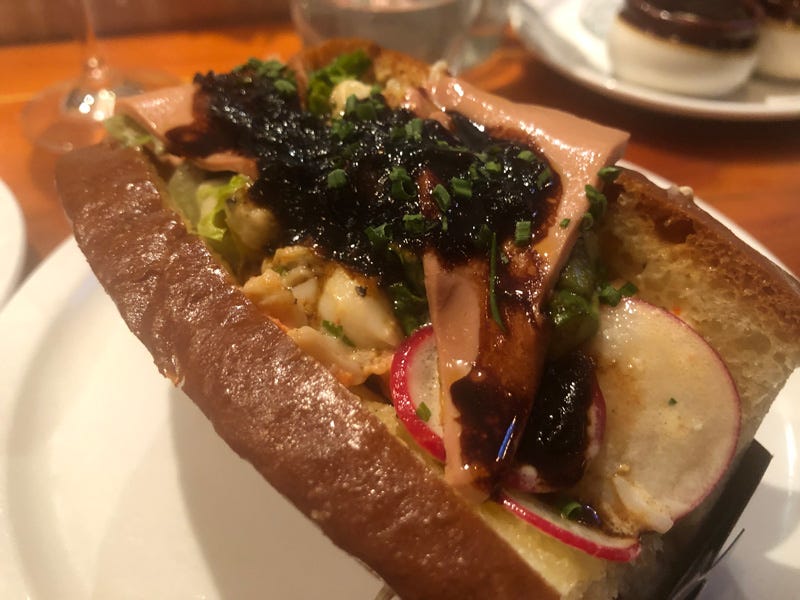
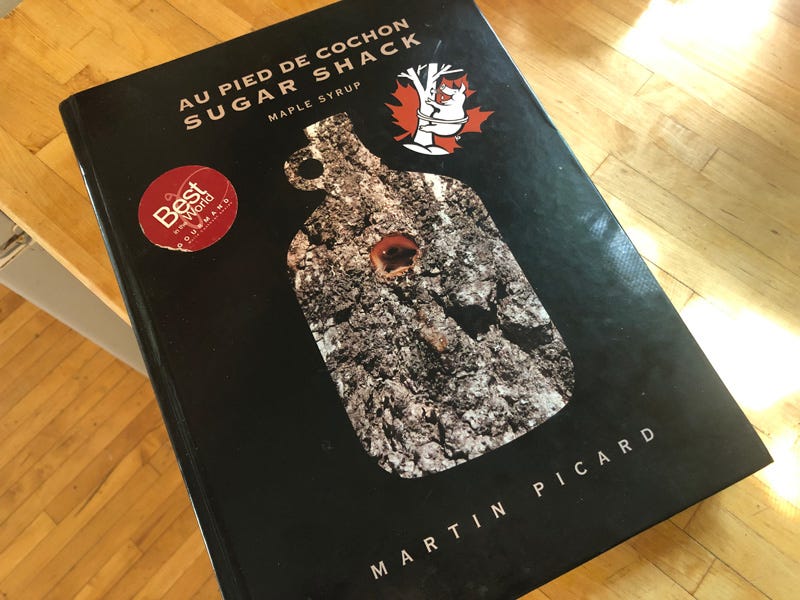
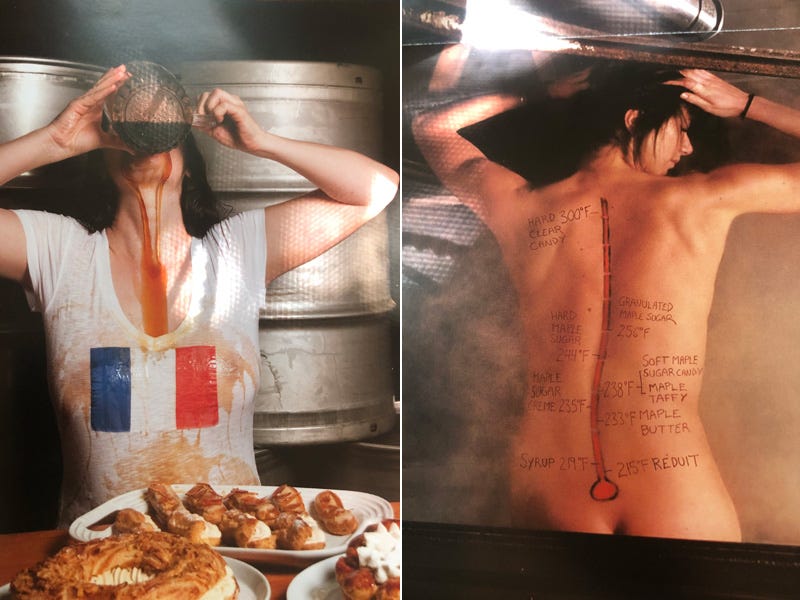
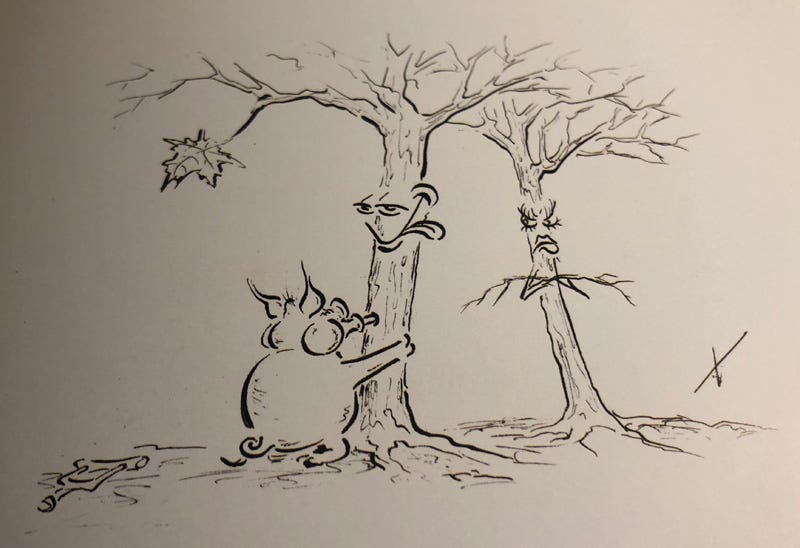
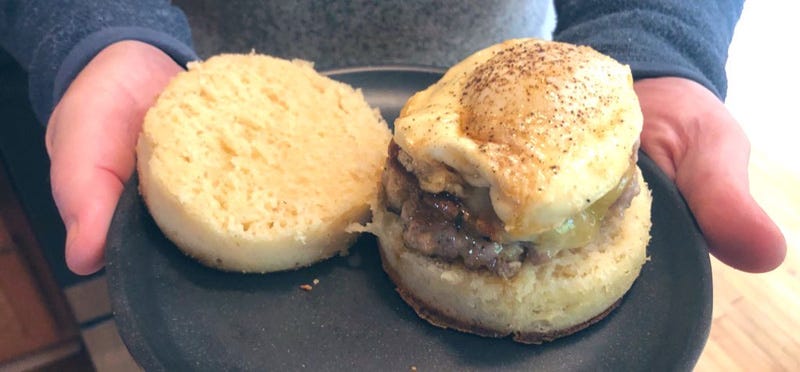
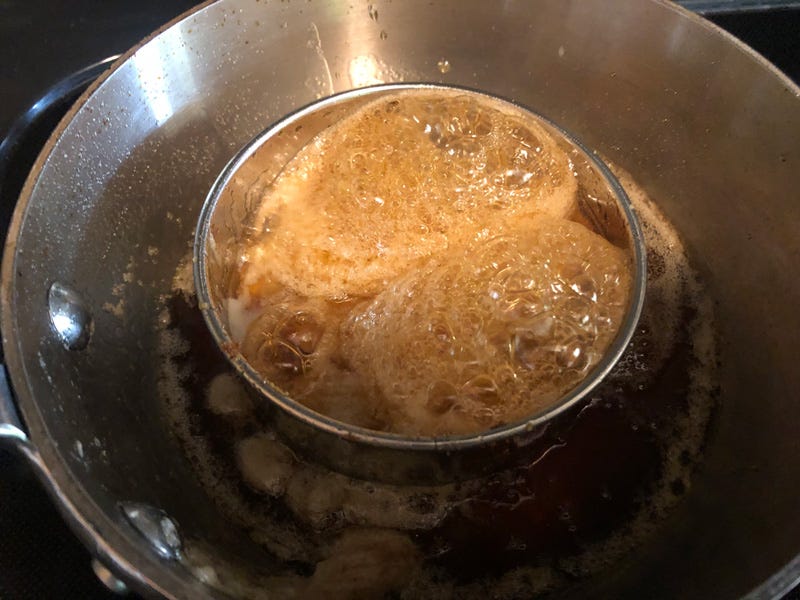
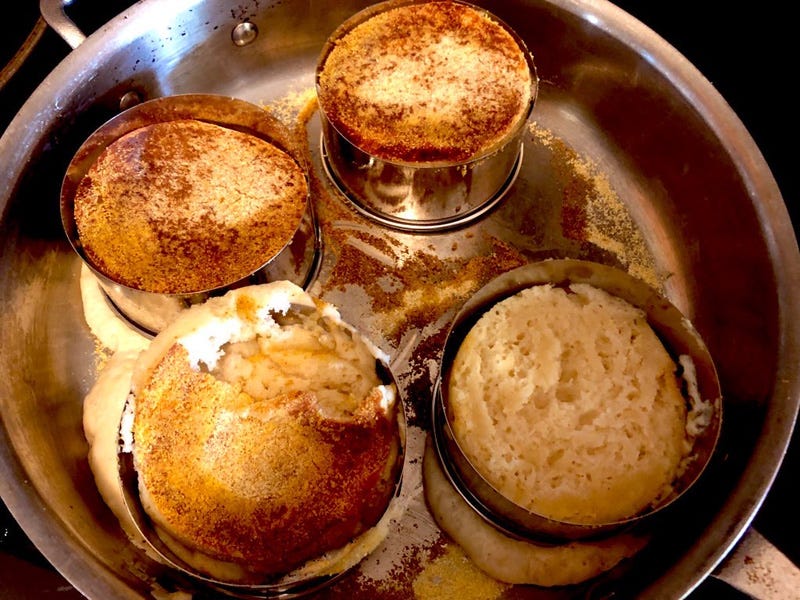


Well... this was a fun read. The photo and cartoon descriptions alone were worth it!